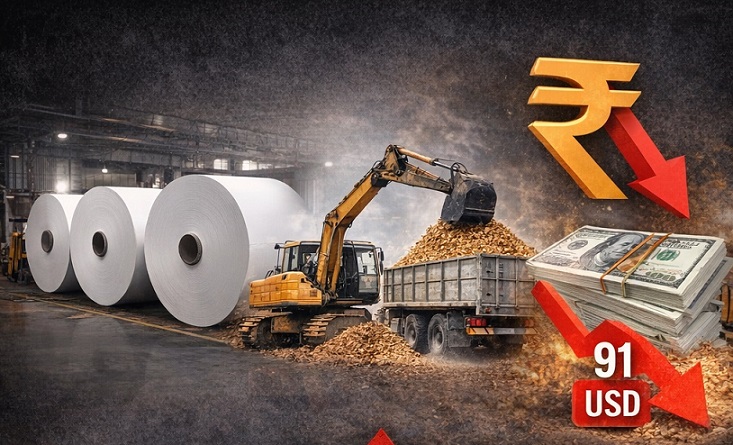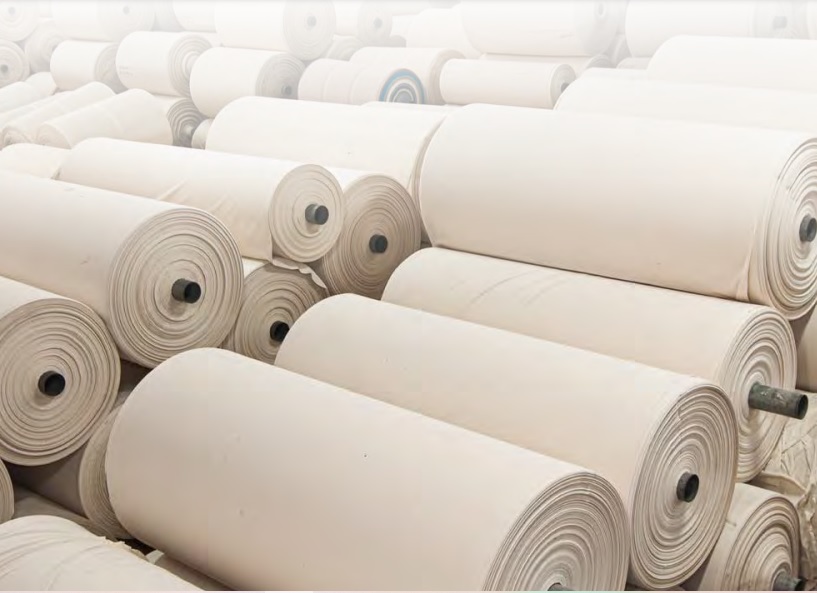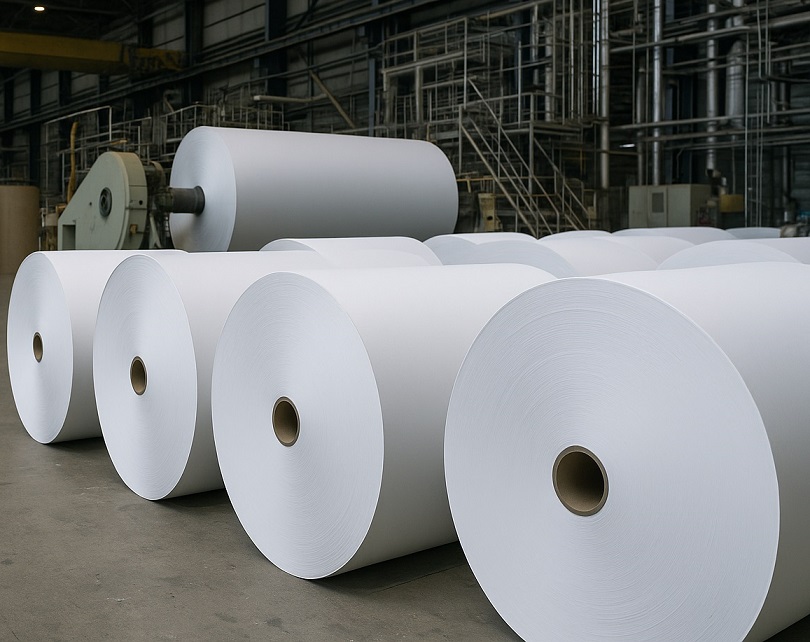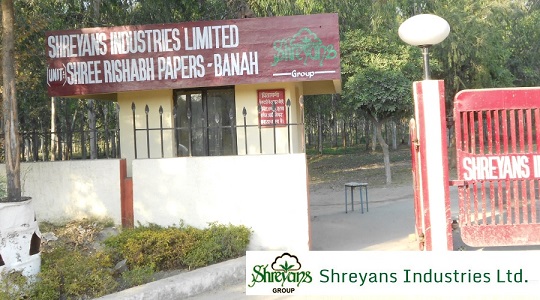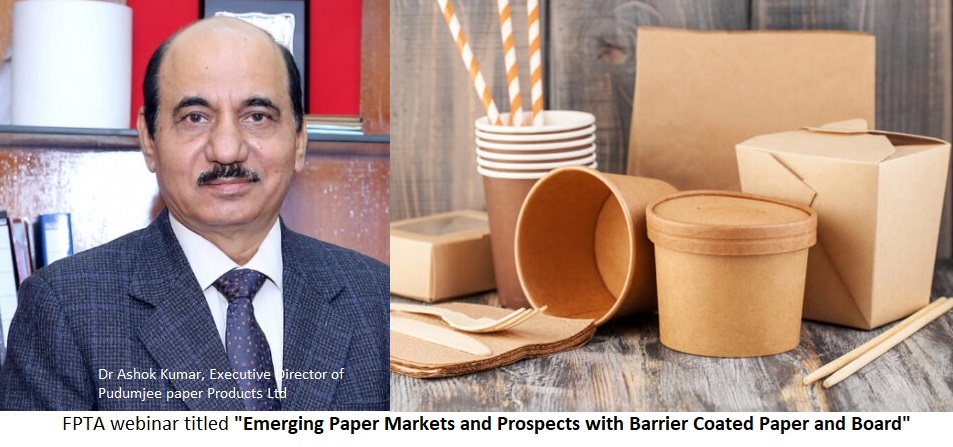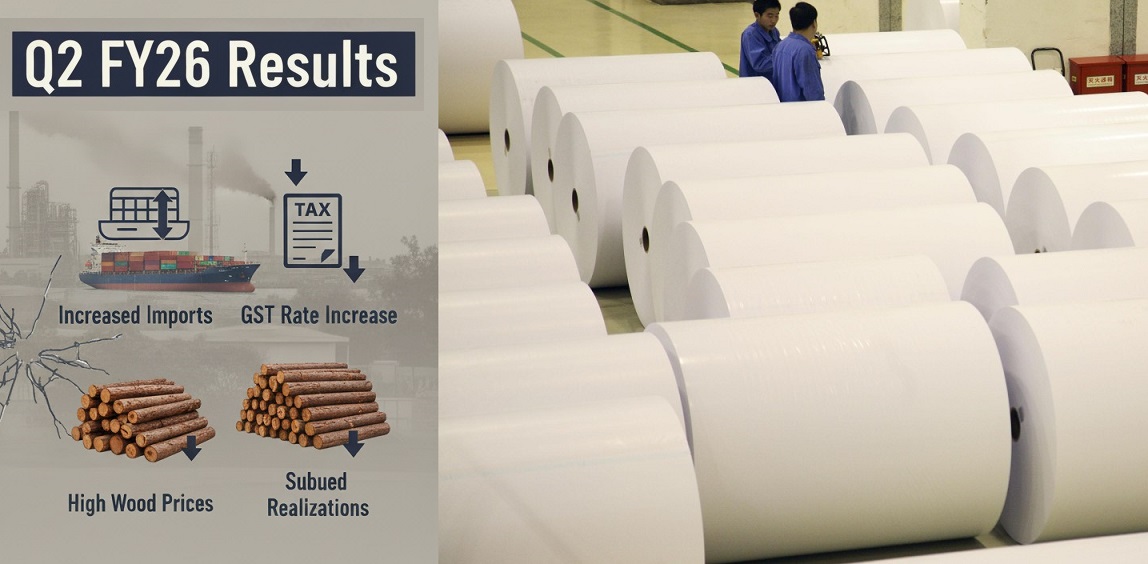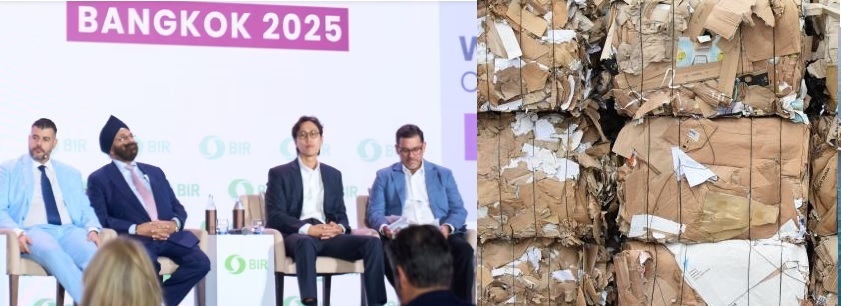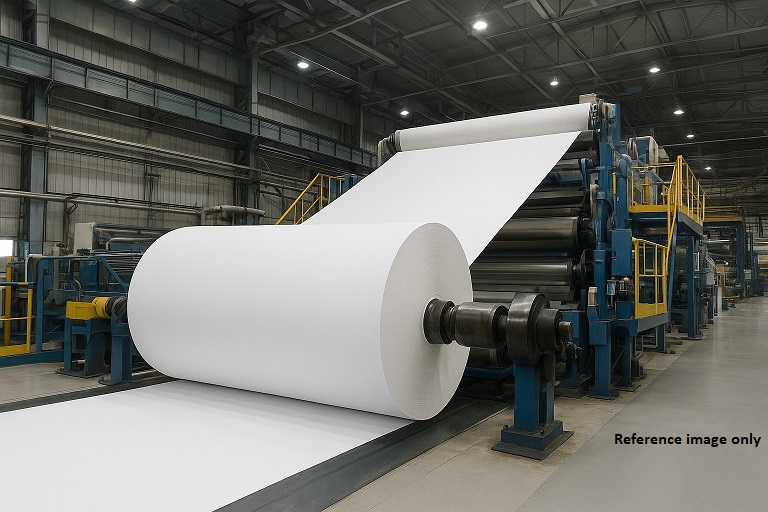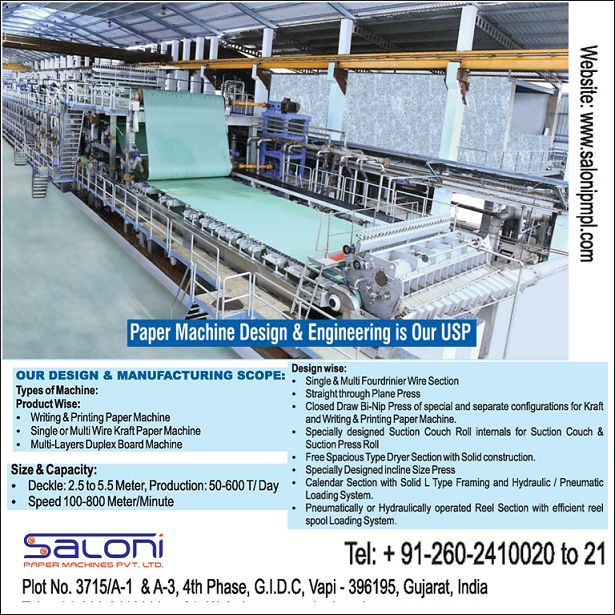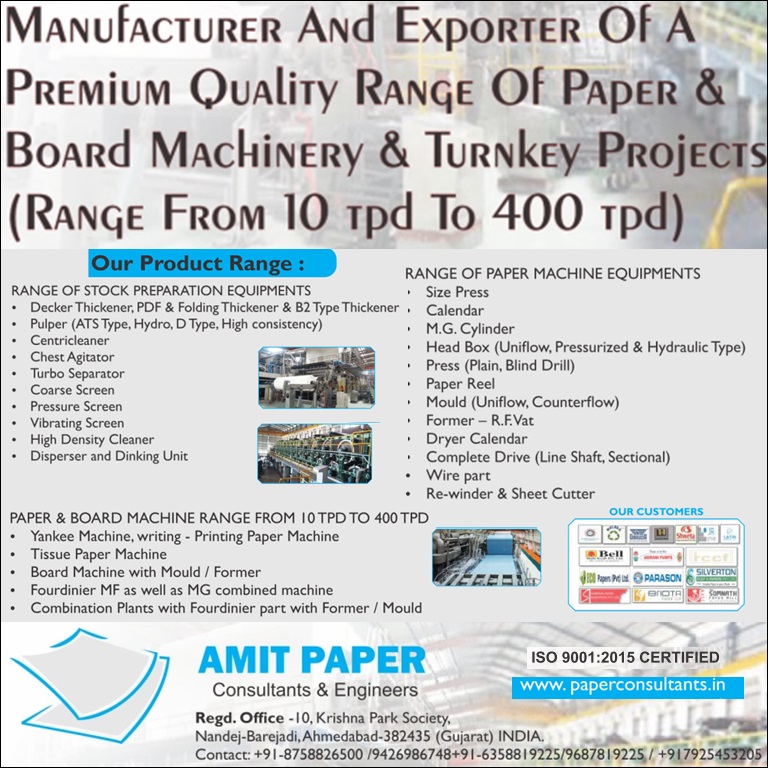Century Pulp and Paper has significantly reduced its reliance on virgin wood fiber by reusing recycled paper and targets planting 1.5 million trees by FY 2026-27
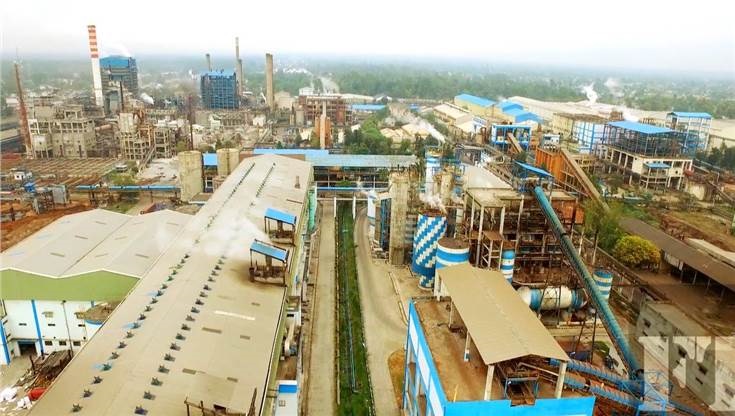
Century Pulp and Paper has significantly reduced its reliance on virgin wood fiber by reusing recycled paper and targets planting 1.5 million trees by FY 26-27
-Installation of the new Line O matic cutter, with an annual capacity of 50,000 metric tons
-Efficiently treat high Chemical Oxygen Demand (COD) wastewater from bagasse-based paper production, converting it into valuable biogas.
-CPP approach to incorporate recycled paper as a raw material in pulp production processes
The Pulp and Paper Times:
Nestled amid the foothills of the Himalayas, CTIL’s Pulp and Paper segment, Century Pulp and Paper operates from a large manufacturing plant in Lalkua, Uttarakhand, covering 396 acres, with an annual production capacity of 4.81 lakhs MT. Century Pulp and Paper ( CPP) stands as a prominent figure in the industry. With an unwavering focus on quality, CPP has carved a niche for ourselves as a renowned producer of premium Writing and Printing Paper, Packaging Board, Green Pulp, and Tissue products.
In The Annual Report of Century Textiles and Industries Limited for FY 23-24, Mr. R.K. Dalmia, Managing Director of CTIL stated that, Our pulp and paper business segment, Century Pulp and Paper (CPP) has performed well this year, achieving higher production levels and sales volumes with a decisive strategy. Over the year, this business has remained committed to the core values of CTIL and worked to ensure that it maintains its leadership position in the pulp and paper industry. A good balance between commercial success and social and environmental responsibility has been the key to success for this business. The business segment desires to be wood positive by increasing plantations each year, slicing off the external reliance to procure wood to meet the total wood requirement. It is imperative for CPP to ensure a consistent supply from a long-term perspective. The Social Forestry Initiative, which began last year in CPP and involves planting samplings, will help us secure a reliable supply of raw materials. In continuation of that, CPP has a target of planting one million trees in the current financial year, and a target of 1.5 million trees by FY 2026- 27. This initiative will grip the debilitating issues around raw material sourcing and distribution.
The current market dynamics in our Pulp and Paper business present an extensive range of opportunities that are ready to be capitalised upon, with the potential to enhance CPP’s market share and reputation.
CPP focus on enhancing product quality, operational efficiency, and sustainability within our Pulp and Paper operations. The division prioritises the use of eco-friendly materials like bagasse and recycled paper, and champions initiatives like social forestry to support environmental sustainability. Innovation is key, with efforts to develop new, sustainable products such as ultra-soft tissues and eco-friendly packaging solutions. Integrating World Class Manufacturing (WCM) practices, including the Kaizen initiatives, are central to the segment’s operations, ensuring continuous improvement in productivity, quality, and environmental stewardship.
CPP primary areas of focus align closely with the key principles of sustainable development and responsible business practices, which are crucial for optimising resource efficiency and minimising its environmental footprint. By concentrating on the sustainable sourcing of raw materials, the implementation of advanced recycling processes, and the adoption of renewable energy sources, we aim to reduce our ecological impact while enhancing operational efficiency.
The Annual Report stated, “Through ongoing investments in R&D, along with advancements in technology, we have strategically utilised sustainable raw materials such recycled paper to produce pulp. CPP approach to incorporate recycled paper as a raw material in pulp production processes emphasises our commitment to sustainability and environmental protection. By reusing recycled paper, we significantly reduce our reliance on virgin wood fibre, thereby conserving natural resources and minimising environmental impact. This strategic initiative not only aligns with global sustainability goals but also contributes to mitigating climate change by reducing carbon emissions associated with traditional pulp production methods. Furthermore, by adopting circular economy principles, we demonstrate our dedication to responsible resource management and set a commendable example for the pulp and paper industry,”
The report said that the Pulp and Paper sector is experiencing a shift of perceptions in paper consumption. Our commitment to sustainability is evident in every sheet of paper produced, sourced from Forest Stewardship Council (FSC)- certified forests, promoting reforestation. Additionally, we utilise bagasse, a sugarcane waste byproduct, reducing waste and supporting farmers. This approach not only highlights the sustainability of paper production but also our dedication to fostering sustainable livelihoods and environmental stewardship. It resonates with customers and enhances our competitive edge by assuring eco-friendly product origins.
Operational Improvement: The modification involved a detailed re-evaluation and recalibration of the tissue machine's operational algorithm. This strategic adjustment allowed for a 20% increase in machine speed, enhancing throughput without compromising product quality. The process also included a rigorous examination of existing machine parameters and the implementation of real-time monitoring systems to ensure optimal performance continuously.
Impact on Production: These enhancements led to an increase in the annual tissue output by 1529.5 metric tons. Moreover, the operational efficiency gained through this initiative significantly reduced production costs. These savings are fundamental in reinforcing our competitive edge in the market, aligning with our overarching goals to control cost and maximise resource utilisation.
Technological Enhancement: To address these challenges, CPP implemented a dual approach, upgrading the existing cutter line and installing a new, state-of-the-art LineOmatic cutter. The upgrade of the existing line involved enhancements to machine automation that rectified issues related to size variation and increased operational speed by 150 meters per minute, significantly boosting throughput.
New Installation: The installation of the new LineOmatic cutter, with an annual capacity of 50,000 metric tons, was a strategic move to directly convert large paper reels into A4-sized copier reams. This not only streamlined the conversion process but also ensured higher consistency and quality in the final product.
Paper Machine-1 (PM1): A new head box has been installed, and the cooling dryer cylinder replaced with steam dryer cylinder at PM1 for capacity enhancement from 70 tpd to 100 tpd in Cupstock and quality improvement such as Formation and GSM variation
in pursuit of sustainable solutions, CTIL’s Pulp and Paper segment implemented an innovative approach to reduce reliance on conventional energy sources. By leveraging advanced green technology, we efficiently treat high Chemical Oxygen Demand (COD) wastewater from bagasse-based paper production, converting it into valuable biogas. This biogas, primarily consisting of methane, is then purified, and compressed into Compressed Methane Gas (CMG), serving as a viable substitute for traditional Liquefied Petroleum Gas (LPG). Furthermore, the process yields sodium sulfate as a by-product, which is repurposed as a makeup chemical at the recovery plant.
Utilising CMG as a substitute for LPG and sodium sulfate as a by-product not only reduces the Company's carbon footprint but also showcases our efforts in resource optimisation. This strategic initiative not only aligns with our sustainability goals but also sets a commendable example for the pulp and paper industry.
Diverse Product Offerings
“Our extensive expertise manifests in our diversified product offering designed to meet both traditional and specialised needs across various industries. We excel in producing fine writing and printing paper, which includes specialised options such as MICR cheque paper for banking needs, high-quality Maplitho (surface size-paper) for offset printing, and versatile copier paper for daily office use. Our Overlay Tissue caters to specific industrial requirements, emphasising our capability to serve niche markets.” The report stated.
In addition to these, we produce a range of virgin fibre grade soft tissues, which are crafted from pure wood pulp to ensure superior softness and absorption. These include Facial Napkins, Kitchen Towels, Toilet Tissues, and Carrier Tissues, designed for both household and commercial use. Our leadership extends into the packaging sector with our Multilayer Packaging Board offerings, comprising of Folding Box Board (FBB), Solid Bleached Sulphate (SBS), and Cup Stock grades, widely used in food packaging and other applications.
Adoption of Element Chlorine-Free (ECF) Bleaching Techniques
CPP employ Elemental Chlorine-Free (ECF) bleaching techniques in its paper production to avoid the use of harmful chlorine compounds. This method significantly reduces the potential for environmental pollution and supports our sustainability goals.
Implementing a Carbon Dioxide converter has enabled the production of Calcium Carbonate from waste CO2 , reducing emissions and costs associated with purchasing raw materials. This innovative approach shows how technology is used to reduce environmental impact and improve product sustainability. By adopting chemical-reducing technologies, we aim to lessen our environmental footprint and enhance product sustainability. Our forthcoming innovations in packaging, such as Oil and Grease Resistant (OGR) paper for food packaging, not only meets consumer demands for sustainability but also signifies our commitment to scale up in the environment-conscious segment.
“We are focussing on reducing costs by increasing efficiency in manufacturing processes. One key initiative involves reducing chemical usage by fine-tuning application practices, resulting in cost savings without compromising product quality. Additionally, we prioritise packaging efficiency through innovative designs and materials to minimise waste. Towards working capital management, we have implemented robust systems, including just-in-time inventory management, and Vendor Managed Inventory (VMI). Leveraging economical alternatives for non-core items additionally enhances efficiency.” The Report informed.
The Report further said, “We implemented VMI for some chemicals procurement. VMI offers a win-win situation for us and our suppliers. By optimising stock levels and streamlining ordering processes, VMI can significantly improve cash flow. We reduce the need for excess inventory storage, freeing up working capital that can be invested elsewhere. This improved cash management allows us for better financial flexibility and strategic investment opportunities.”
The above views on Century Pulp and Paper has been taken form the Annual Report of CTIL for FY 23-24
Web Title: Century Pulp and Paper has significantly reduced its reliance on virgin wood fiber by reusing recycled paper and targets planting 1.5 million trees by FY 2026-27





 Join WhatsApp Group
Join WhatsApp Group Join Telegram Channel
Join Telegram Channel Join YouTube Channel
Join YouTube Channel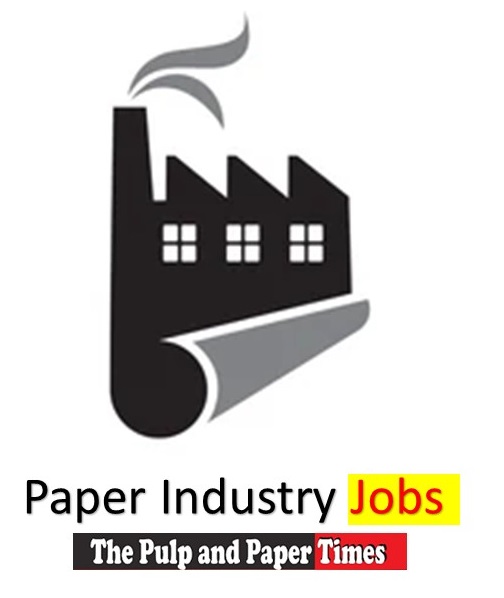 Join Job Channel (View | Submit Jobs)
Join Job Channel (View | Submit Jobs) Join Buy Sell Channel (Free to Submit)
Join Buy Sell Channel (Free to Submit) Paper News Headlines Channel (Free to read)
Paper News Headlines Channel (Free to read)



